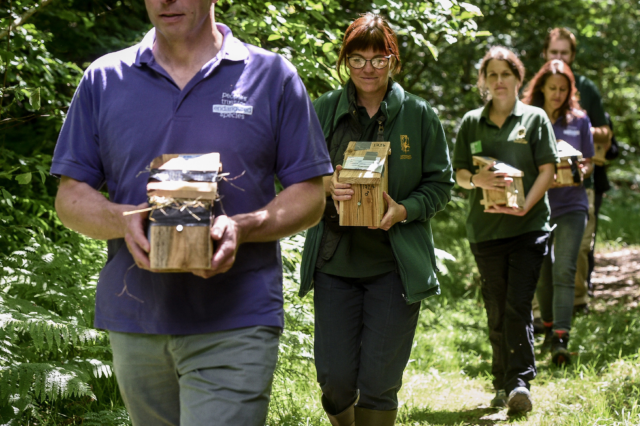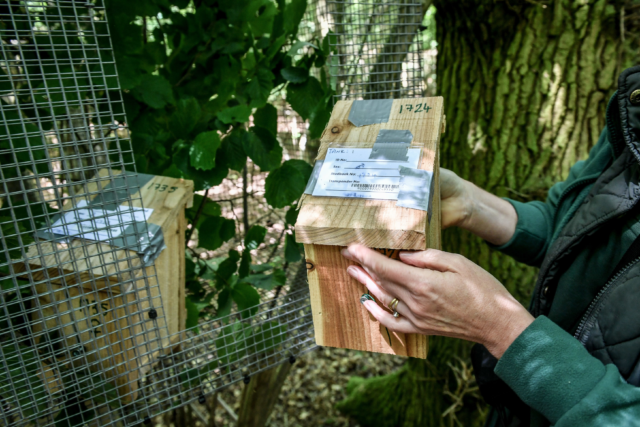Hazel dormice released into woodland in latest effort to boost species
Reintroduction is part of a wider landscape scheme which aims to create a stronghold for the threatened mammals in Warwickshire.

Dozens of rare hazel dormice are being released into a wood in Warwickshire as part of efforts to boost the fortunes of the tiny British mammal.
A reintroduction of 20 breeding pairs or trios of dormice into an undisclosed woodland location south of Coventry is being led by the People’s Trust for Endangered Species (PTES) and Warwickshire Wildlife Trust.

A new assessment of British mammals published this week has listed the hazel dormouse, immortalised as a sleepy guest at the Mad Hatter’s Tea Party in Alice In Wonderland, as being at risk of extinction in Britain.
Hazel dormice have become extinct from 17 English counties since the 19th century and have seen populations fall by a third since 2000, according to a report published by PTES in 2016.

The tiny dormice, which have been bred in captivity and given a full health check before the reintroduction, are being released on site in pairs or trios in their own wooden nest box, fitted inside a mesh cage secured to trees.
The cages are filled with food and water and allow the dormice to acclimatise to their new wild home, before being opened after around 10 days to allow them out into the woodland.

“Since then, over 900 dormice have been released into woodlands in 12 English counties where they once existed, in an effort to rebuild lost populations.
“This year’s reintroduction is the second phase of a wider landscape project we started in Warwickshire last year, so we hope that by returning to the same county, albeit to a different woodland, that we can connect the two populations in the future, creating a larger, self-sustaining population which we hope will help bring this species back from the brink.”

“This, combined with ongoing sympathetic woodland management and a drive to improve surrounding hedgerow links, should help ensure the successful establishment of this new population.”





